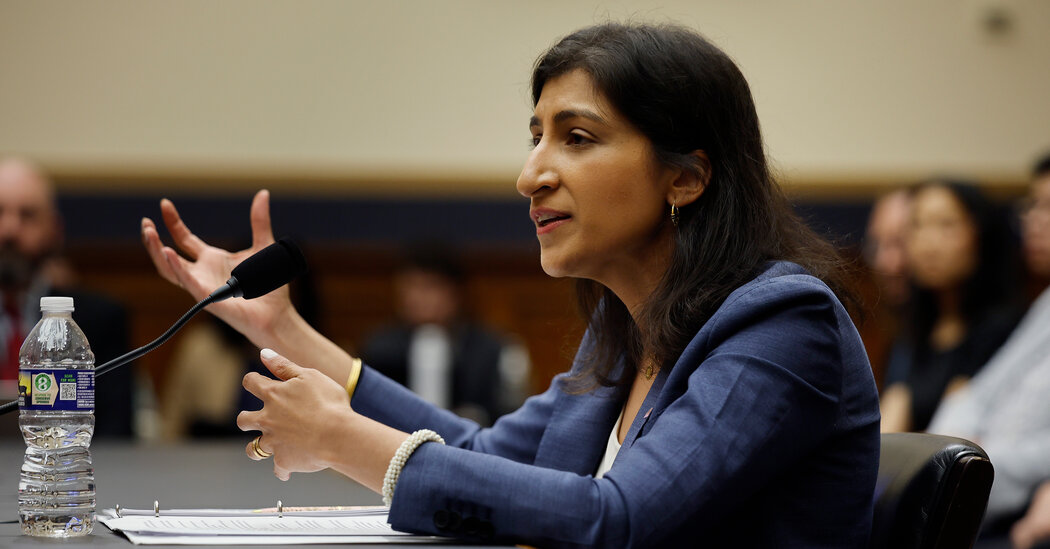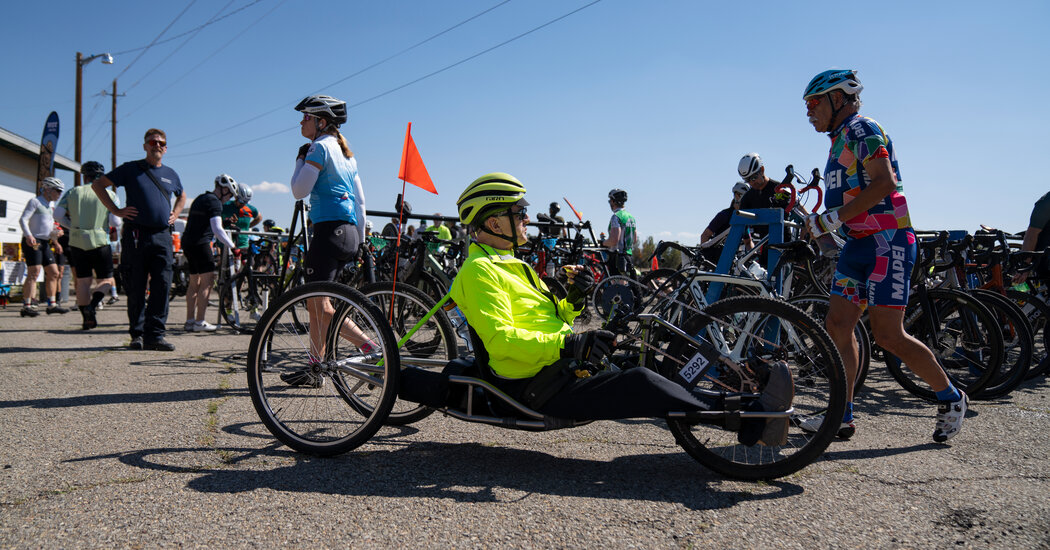Five years on the Phoenix streets battered Vance Blair’s body. His vision dimmed, his speech slowed, and his hands began to twitch. A bulging pelvis revealed the need for hernia surgery, and the vacant lot where he slept was no place to keep dressings clean.
Mr. Blair often lingered by a shaded building, and several women who worked there grew fond of the diffident man who asked permission to escape the sun. They brought him food and discovered his dilemma: Medicaid would cover his operation, but hospitals discharge patients quickly and surgeons would not proceed unless he had a place to heal.
Then they learned that a Phoenix group runs what amounts to a nursing home for the homeless. Mr. Blair has remained there since his operation six months ago and says the care might have saved his life.
“After a while of being outside, I was having thoughts of not wanting to live anymore,” he said. “This place has been a great help.”
Respite care for homeless people is rapidly growing, aimed at people well enough to leave the hospital but too sick for the street. Its rise reflects the aging of the unhoused population and the decade-long expansion of Medicaid, which helps cover the cost. Many programs also get subsidies from hospitals or insurance companies eager to shorten hospital stays or reduce readmissions.
The number of programs, mostly nonprofit, has roughly doubled since 2016, to more than 165, according to the National Institute for Medical Respite Care. The movement has spread to places like Memphis; Missoula, Mont.; and Greenville, S.C., underscoring the ubiquity of homelessness.
With two 50-bed sites and a roster of clinicians, the Phoenix program, Circle the City, is one of the most sophisticated. Patients have an average age of 56 and bodies that seem much older. They crowd the halls with wheelchairs, walkers, intravenous lines and colostomy bags, markers of debilitation that without shelter would carry the risk of infection or assault.
Proponents of respite care hail the movement as a humanitarian imperative and a sensible way to control health care costs.
“We make sure people have a humane place to go and keep them from bouncing back to the emergency room,” said Kim Despres, the chief executive at Circle the City.
But some programs offer only rudimentary care, more like shelters than nursing homes. Critics fear the movement could divert patients into second-class convalescence and obscure the need for permanent housing.
“Hospitals use respite care to get indigent patients off their books, and then they’re often discharged back into homelessness,” said Dennis Culhane, who studies aging and homelessness at the University of Pennsylvania.
Homeless patients should be cared for in licensed nursing homes, he said, alongside the general population.
A major challenge in respite care is what to do when patients get well: Many have nowhere to go. Caseworkers at Circle the City often spend months helping patients make plans, but high rents and the shortage of housing aid mean some return to the streets.
“It’s very scary for them to be with us for two or three months and then have to leave,” Ms. Despres said.
A visit to Circle the City is a tutorial on the infirmity that can accompany homelessness. Sheila Meade, 62, uses a walker after a hysterectomy. Armando Sanchez, 42, lost five toes to diabetes. Quintin Alston, 62, had a hip replaced. Kenson John, 50, a paraplegic, is recovering from toxic shock. Until recently, all were sleeping outdoors or in shelters.
It may be obvious that homelessness can cause health problems. After years in the Phoenix sun, Mr. Blair, the hernia patient, nearly went blind from cataracts, which have been removed.
But health problems can also cause homelessness. Born with spina bifida, Lawrence Mora, 57, long supported himself as a translator, but aging left him unable to walk and too depressed for full-time work. He was hospitalized with a kidney ailment and evicted from his apartment the same day.
He was discharged from the hospital to Circle the City and praises the mental health treatment it provided. “I might have the title ‘homeless,’ but we’re given so much dignity,” he said.
The aging of the homeless population is a stark demographic shift.
In a forthcoming study with Thomas Byrne, Mr. Culhane of the University of Pennsylvania found that by 2020 the largest cluster of homeless men were in their mid-50s, up from mid-30s three decades earlier. The share of the population that was 60 and older had more than doubled, to 19 percent. He says the trend reflects the plight of late baby boomers who matured amid deindustrialization and soaring housing costs, then carried the scars through life.
Margot Kushel, the director of the Benioff Homelessness and Housing Initiative at University of California, San Francisco, found that unhoused people have the health profiles of patients two decades older, with similar rates of incontinence, dementia and falls.
Worn by lives of poverty, weakened by high rates of addiction and injury, and unable to manage treatable diseases like diabetes and cancer, they suffer mortality rates 3.5 times those of the general population, Dr. Kushel found.
By insuring an additional 15 million people in or near poverty — the main risk pool for homelessness — the Medicaid expansion that started with the Affordable Care Act of 2010 gave respite programs new ways to recover costs. Five states, including California, have federal permission to cover respite care directly. In other states, respite programs can bill Medicaid for discrete services, like supplying wheelchairs or conducting exams.
Respite care has also grown, albeit more modestly, in the 10 states that have rejected the Medicaid expansion, driven by sheer need. With less funding, they tend to offer fewer services.
Circle the City, which opened in 2012, was willed into being by a Phoenix nun who sought donations with a shoe box. Now the nonprofit group has a $32 million budget and a staff of 260, including physicians, nurse practitioners, licensed social workers and mobile medical vans.
“Navigators” stationed in seven emergency rooms help manage homeless patients, seeking alternative care for those who do not need admission and making discharge plans for those who do. Some local hospitals help defray the cost.
Housing, not medicine, may be respite care’s toughest test. Most patients are too ill to work, rent subsidies are scarce, and many have exhausted family aid.
About three quarters of Circle the City’s patients leave with housing plans, including subsidized apartments, addiction programs or temporary stays with friends, Ms. Despres said. That still leaves a quarter leaving for sidewalks or shelters, and others return to homelessness after their makeshift arrangements dissolve.
Hard cases abound. Mr. John, who is paraplegic, is an undocumented immigrant. Mr. Alston, the hip patient, has a murder conviction. (He said he killed someone who had molested him as a teen.) Ms. Meade would live with her daughter, but her daughter lives in a park — the same park where Ms. Meade lived for a decade.
“It’s a very fine balance, not wanting to discharge them back into the street with no options but not wanting to hold on to them too long because then we can’t bring new people in,” Ms. Despres said.
Circle the City offers hospice care. Its terminally ill patients include Douglas Botsford, 57, who arrived in April with a failing heart and a life story that he shares with a raconteur’s flair. It involves a sales career in auto parts, a vindictive ex-girlfriend and an addiction to methamphetamine that left him living in his car with his soul mate, a pit bull named Mia.
She died two years ago after blinking goodbye in his arms. He suffered a heart attack two days later and learned he had little time to live.
“My heart died when my dog did,” he said.
Hospitalized with another heart attack, Mr. Botsford was discharged to a shelter that could not care for him and sent back to the hospital — the exact scenario that respite care seeks to avoid. He assumed he would die on the street, until Circle the City offered care.
“I’m a very lucky man to have the chance to die here,” he said.
Mr. Blair, recovering from his hernia, counts himself lucky, too. He went searching for shade and found good Samaritans.
A taciturn man with a graying red beard, he describes his life before homelessness only in faint detail. The factory where he worked near Cleveland closed. His girlfriend died. He could not afford the apartment they shared, and Ohio was too cold for him to live outdoors. He took a bus to Phoenix and slept behind an Italian restaurant, soothed by the patio music.
“Being around people is hard for me,” he said. “I get a lot of anxiety feelings sometimes, panic attacks that are very tough.”
He survived on food stamps and collected cans, but outdoor living weathered his body and planted dark thoughts. Ten days in a psychiatric hospital helped. Returning to homelessness did not.
When Tatiana Foss, 27, started working at a dermatology clinic in a building with a carport, she found a grizzled man with a gentle manner asking to sit in the shade. His hands shook, and he moved his mouth as if chewing invisible gum. She admired his politeness.
With a co-worker, she introduced him to the dermatologist, who treated a sore, diagnosed the hernia and understood that Mr. Blair could not get surgery without a place to recuperate. As it happened, Ms. Despres, Circle the City’s leader, was among the dermatologist’s patients. Mr. Blair got a bed.
His stay may offer a route from homelessness. With a case manager’s help, Mr. Blair has been diagnosed with “serious mental illness,” which gives him priority for subsidized housing with support services.
Ms. Foss recently visited. A woman of soft-spoken empathy, she praised Mr. Blair for accepting psychiatric care — “it’s really important to take care of our mental health’’ — and expressed gratitude for their unlikely friendship.
“Thank you for letting me be part of your journey,” she said.
Mr. Vance clasped his shaky hands and stared at the ceiling as if searching for words special enough to convey his gratitude. Finding none, he said simply, “I thank you for all your help.”







